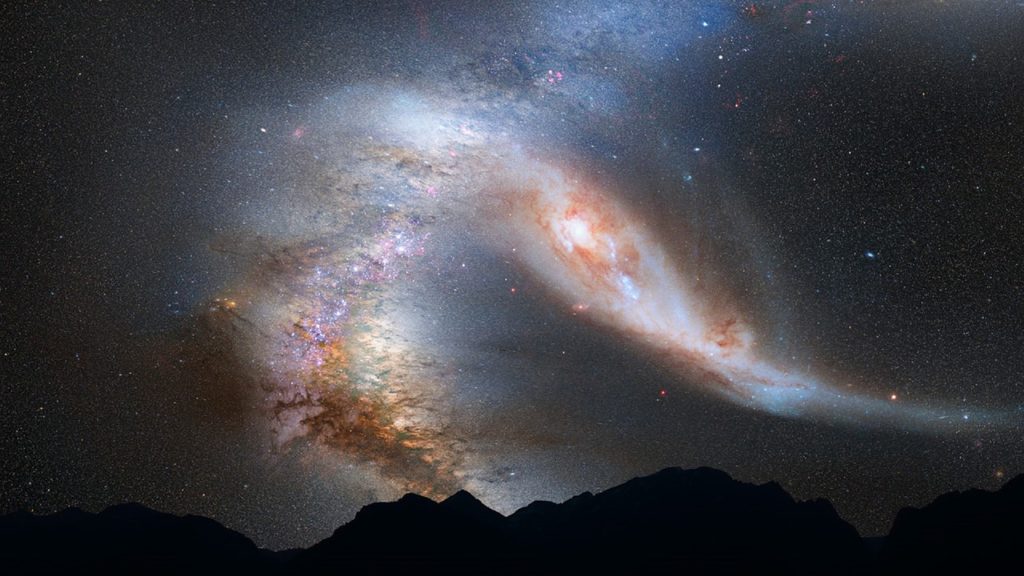One of the fundamental questions of cosmology is the nature of life’s origins. Why are we here? A method for attempting to answer that question is to analyze the possible physical parameters that define our universe with the intention of understanding which parameters make the evolution of life possible. In other words, what about our universe makes it able to create life?
Multiverse theory suggests that there are infinite universes outside of our own, each existing in a distinct bubble of space-time, and that each one differs in certain parameters like the mass or charges of certain atoms. This research fits into multiverse theory by defining the parameters each parallel universe would potentially differ in.
In his recent paper titled “Cosmic Initial Condition for a Habitable Universe” physicist Sohrab Rahvar suggests that the probability of a habitable universe is proportional to the asymmetry of baryons and antibaryons. Baryons and antibaryons are both subatomic particles that make up protons and neutrons. Which besides electrons, are the components of all atoms. Everything we can see and feel is therefore baryonic matter or matter made up of baryons. That asymmetry, or the difference in proportion, of baryons and antibaryons is what can make universe capable of producing the large structures like stars and galaxies that are necessary for life.
Whether a universe has asymmetry or not would be determined in the inflationary phase of the early universe. This phase is when the universe goes from very small to something resembling the size of our universe today. In inflationary expansion more space isn’t created by blowing up the balloon so to speak, but by the air inside the balloon getting denser. Imagine a 13” computer screen that has more pixels added into it. The screen is still 13” but there’s also more room for things to be inside of it. In the universe’s case this means large structures like the stars and galaxies we’re familiar with.
In this inflationary universe, entropy, or disorder, increases over time. This indicates that the early universe must have had a very low entropy, a state known as “singularity” that preceded the Big Bang. For entropy to continue increasing for an infinite amount of time, as inflationary cosmology suggests, then the early universe must have certain things, like the speed of inflation, set sometime during its birth. This parameter of inflation is logarithmic which indicates why entropy could continue into infinity. This parameter for inflation is defined as a universe’s “e-folding number”.
A large e-folding number through the folding of space-time creates an environment where new inflationary areas or bubbles can form in a parent domain. In other words, universes with large e-folding numbers can produce new universes inside of themselves. A universe with a large enough e-folding number would, in theory, create infinite new universes in which some could meet the conditions for life. A low e-folding number would result in a rate of inflation that would eventually end, causing a universal collapse shortly after its birth. Or this low e-folding number universe’s energy could be so diluted that it would never form the large structures necessary for the evolution of life.
Rahvar determines that the e-folding number, or the number of folds in space-time, is a measure of the difference between the quantity of baryons and antibaryons present in an early universe. Baryons are subatomic particles made of three quarks. Quarks are the smallest building block of matter yet identified, even smaller than the atom. An antibaryon is just a baryon which has 3 different “anti” quarks making it up. When a baryon and an antibaryon collide they destroy each other in a burst of energy. Therefore the larger the difference in proportion, or asymmetry, of baryons and antibaryons the more atomic matter a universe can have. The more atomic matter the more likely a universe is to develop stars and galaxies and other large structures which are necessary for life.
A hypothesis of early cosmology is that the Big Bang should have produced an equal amount of baryons and antibaryons, as is the case with other subatomic particles and their anti variants, like protons and antiprotons. If it had, it would have meant most atomic matter wouldn’t have developed. Through a process known as baryogenesis, the amount of baryons in the universe came to outnumber the amount of antibaryons and produced Rahvar’s demonstrated asymmetry.
This has huge implications for our understanding of the universe. If we can objectively quantify and understand the formation of our universe, we might eventually compare that with the data of other universes and from there determine if another bubble in our inflationary space, or multiverse, is capable of harbouring life.
The search for extraterrestrial intelligence (SETI) has focused, for obvious reasons, on our currently understood universe. However, this paper provocatively suggests that intelligent life may also exist elsewhere in the multiverse.


